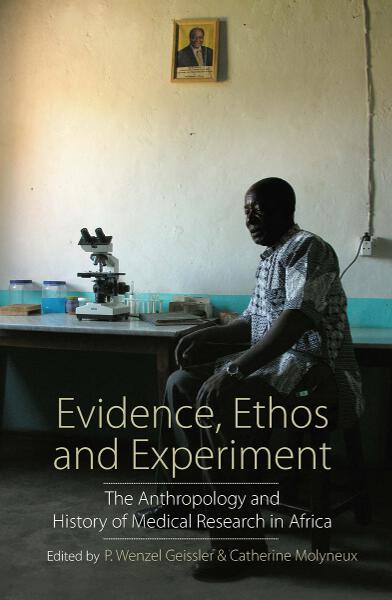
By Lyn Schumaker
Excerpted from EVIDENCE, ETHOS AND EXPERIMENT: The Anthropology and History of Medical Research in Africa, edited by P. Wenzel Geissler and Catherine Molyneux
This article describes a historical case of medical research and its application – the study of mosquitoes that made malaria control possible on colonial Zambia’s Copperbelt. Scholars have pointed to the ways that colonial doctors and sanitarians labelled Africans as ‘wild’ vectors or reservoirs of infection dangerous to ‘civilised’ European settlers. While not banishing racial divisions, the Copperbelt malaria control programme made an important step away from such medically justified segregationist visions, replacing them with new metaphors of health and risk, and new geographies of human/mosquito movement, consumption and reproduction. In addition to these European medical and industrial views, I will analyse African miners’ and malaria control workers’ responses, including their resistance to some aspects of malaria control, but also their frequent identification with its modernising, scientific mission.
Malaria control on the Copperbelt succeeded because its interventions to counter mosquito breeding shared many elements with new industrial and city planning ideas about worker health and housing. Research, experiment and intervention characterised these endeavours, too, as well as the larger interwar African context. In practical terms, however, the success of malaria control depended upon the ability of medical experts to translate their research on mosquito behaviour and habitats into routine practices of surveillance and environmental intervention – integrating research and application. Sharing of practices, if not always of interpretations, enabled diverse actors to participate in malaria control – including mining engineers familiar with problems of drainage and African antimalaria teams who saw their work as hygienic, improving the environment where they lived. The research culture that emerged during antimalaria work also shared elements found in the emergent African urban industrial culture of the Copperbelt. This is revealed in the interactions, positive and negative, between African malaria control workers and Copperbelt residents.
I will use evidence gathered during archival work, participant observation and interviews on the Copperbelt, as well as during visits to rural sites with a high population of retired miners (the Lake Bangweulu area in Zambia’s Luapula Province). Interviews done by a research assistant, Timothy Mgala, also took place in May and October 2006 in and around Luanshya. These interviews with antimalaria workers mainly focused on the late 1950s to 1990s, while a few remembered early mine history, 1928 to the 1940s.
The following sections describe the background to the Copperbelt programme, the malaria experts’ approach and their research practices. I then consider the parallels and interactions of malaria control with the mines’ organisation and control of workers. The final section will discuss Zambian miners’ views and the antimalaria team members’ perceptions of their work. Ultimately, the antimalaria programme played a role not only in the mine’s approach to controlling workers and moulding them into a modern (and politically moderate) working class. It also appealed to African miners’ views of themselves as a modern urban people, though they sustained continuing grievances about the ways that malaria control practices underlined their subordinate position in the Copperbelt’s racial and class hierarchy.
About the book
EVIDENCE, ETHOS AND EXPERIMENT
The Anthropology and History of Medical Research in Africa
Edited by P. Wenzel Geissler and Catherine Molyneux
“Each of the chapters is noteworthy. Together, they offer a promising opportunity to broaden the field of postcolonial science studies in ways that remind us how ethicality is at the heart of these encounters of science… the volume will be useful to medical anthropologists, science studies scholars, and generalist scholars of Africa and global health. Individual chapters, as well as whole sections of the book, will be particularly useful for teaching at the upper-division undergraduate or graduate levels.” Medical Anthropology Quarterly
Stay connected
For updates on our Medical Anthropology offerings as well as all other developments from Berghahn, sign up for customized e-Newsletters, become a Facebook fan, follow us on Twitter and Instagram, and listen to our podcast, Salon B, on Spotify.


